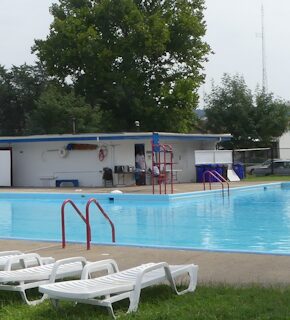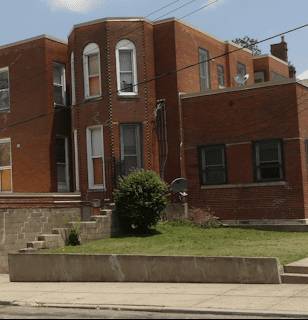Preserving Ohio's Place in the Civil Rights Movement
The story of Ohio's struggle to achieve civil rights for African American citizens can be found in buildings, structures, sites, and neighborhoods throughout the state. Recognizing these often-overlooked historic resources raises awareness and provides a better understanding of this important aspect of Ohio's history. One way these resources are recognized is through listing in the National Register of Historic Places.
The 20th Century African American Civil Rights Movement in Ohio Multiple Property Document (MPD) provides a detailed history of civil rights activity in Ohio. It identifies specific property types associated with the movement. Use the 20th Century African American Civil Rights Movement historic context document to identify broad themes associated with the historic property being nominated. Compare your historic property types of the MPD to aid in assessing historic integrity.
What is the National Register of Historic Places?
The National Register of Historic Places is the official list of properties recognized by the federal government as worthy of preservation. It is administered at the state level by each respective state. The State Historic Preservation Office of Ohio History Connection administers the National Register Program in Ohio. Download a fact sheet about the National Register of Historic Places.
What is the Process for Listing?
In Ohio, anyone may nominate a property for listing. All nominations are processed through the State Historic Preservation Office. Once a nomination is complete, the property owner(s), appropriate officials, and other interested parties are notified and given an opportunity to comment on the proposed listing. The nomination process typically takes 9-12 months. Download a fact sheet about the National Register of Historic Places.
How Do I Find Out if My Property Might Qualify for Nomination?
In Ohio, the first step in nominating a property to the National Register is to complete a National Register Preliminary Questionnaire. This form is designed to help determine whether a property or district is likely to qualify for nomination to the National Register of Historic Places. This questionnaire will help State Historic Preservation Office staff determine if the property appears to meet the National Register requirements.
My Property is a Good Candidate, What's Next?
Nominations are written by property owners, interested parties or historic preservation consultants and submitted to the State Historic Preservation Office.
To support nomination of historic properties associated with Ohio's 20th century civil rights movement, a historic context document has been prepared to provide in-depth information about this significant period in Ohio history.
Ohio Civil Rights Associated Listed Nominations
Eugene McKinley Memorial Pool, Portsmouth


The Eugene McKinley Memorial Pool represents a significant part of the social history of Portsmouth. Its legacy, like all social history, is entirely based on perspective. Some argue while the Terrace Club and McKinley pools were both integrated from the late 1960s onward, a de facto segregation remained, with whites largely attending Terrace Club and blacks patronizing the McKinley pool. But for others, the effort to integrate Portsmouth’s institutions represented progress and changed the racial dynamics of a small Ohio River city.
Many facilities in Portsmouth were segregated during the late nineteenth and early twentieth centuries, including the Terrace Club, a privately owned whites-only pool. Denied access to the local swimming pool Portsmouth’s black population's only choices were the Scioto River and other local bodies of water. In 1961, a fourteen-year-old African American youth, Eugene McKinley, drowned in a gravel pit off the Scioto River, triggering community members to form a group to raise funds for an integrated swimming pool in Portsmouth. When funding for the integrated pool stalled in 1964, the local chapter of the NAACP staged “wade-ins” and other efforts, which succeeded in integrating the Terrace Club during the next summer. In the meantime, the city of Portsmouth agreed to fund the new pool, dedicated in 1967 in Eugene McKinley’s memory.

Manse Hotel and Annex, Cincinnati


The Manse Hotel and Annex is a rare example of an African American-owned, full-service hotel with convention-type facilities that served as a regional destination. Located in the Walnut Hills neighborhood of Cincinnati, the Manse Hotel began as a c.1876 Second-Empire Style Home and served as a hotel and rooming house by the early 20th century. The Annex was a nineteenth-century apartment building converted for additional hotel rooms. An African American entrepreneur named Horace Sudduth bought the property in 1931, operating the Manse until the 1960s.
Before the 1960s, Cincinnati’s major downtown hotels were segregated. The Manse Hotel was the most popular hotel catering to African Americans visiting or living in Cincinnati, although the hotel was fully integrated. The Manse Hotel was the site for countless social events, such as wedding receptions, meetings of the city’s African American fraternal organizations, and hosting conventions. Celebrities from the sports world (Frank Robinson, Jackie Robinson, and Hank Aaron) to entertainers (Duke Ellington and James Brown) stayed at the Manse. But most significantly, it became the focal point of the Civil Rights Movement in Cincinnati, as it provided a space for local, state, and national Civil Rights groups to meet. Ironically, after the passage of the Civil Rights Act of 1964, business at the Manse Hotel suffered as patronage of Cincinnati’s black community had shifted toward downtown establishments. By 1972, the Manse Hotel was sold and converted into low-income housing.

Helpful Tools & Additional Resources
For additional information, contact the State Historic Preservation Office at 614.298.2000 or
Email Us
